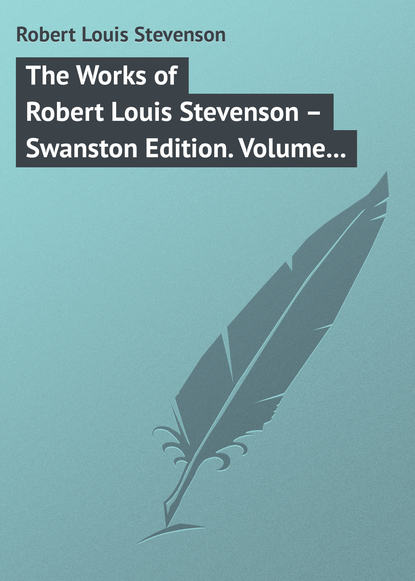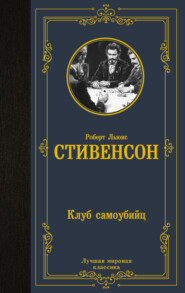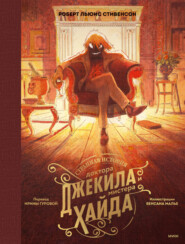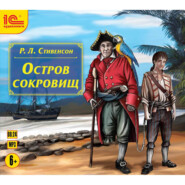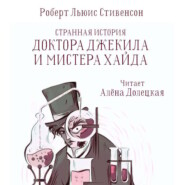По всем вопросам обращайтесь на: info@litportal.ru
(©) 2003-2024.
✖
The Works of Robert Louis Stevenson – Swanston Edition. Volume 18
Настройки чтения
Размер шрифта
Высота строк
Поля
10
Suppose.
11
i. e. in building a section of a new road to Mr. Stevenson’s house. The paper referred to is a copy of the Samoa Times, containing a report of the dinner given by Mr. Stevenson at Vailima to inaugurate this new road.
12
The lady to whom the first three of these letters are addressed “used to hear” (writes Mr. Lloyd Osbourne) “so frequently of the ‘boys’ in Vailima, that she wrote and asked Mr. Stevenson for news of them, as it would so much interest her little girls. In the tropics, for some reason or other that it is impossible to understand, servants and work-people are always called ‘boys,’ though the years of Methuselah may have whitened their heads, and great-grandchildren prattle about their knees. Mr. Stevenson was amused to think that his ‘boys,’ who ranged from eighteen years of age to threescore and ten, should be mistaken for little youngsters; but he was touched to hear of the sick children his friend tried so hard to entertain, and gladly wrote a few letters to them. He would have written more but for the fact that his friend left the home, being transferred elsewhere.”
13
Come-a-thousand.
14
The German company, from which we got our black boy Arick, owns and cultivates many thousands of acres in Samoa, and keeps at least a thousand black people to work on its plantations. Two schooners are always busy in bringing fresh batches to Samoa, and in taking home to their own islands the men who have worked out their three years’ term of labour. This traffic in human beings is called the “labour trade,” and is the life’s blood, not only of the great German company, but of all the planters in Fiji, Queensland, New Caledonia, German New Guinea, the Solomon Islands, and the New Hebrides. The difference between the labour trade, as it is now carried on under Government supervision, and the slave trade is a great one, but not great enough to please sensitive people. In Samoa the missionaries are not allowed by the company to teach these poor savages religion, or to do anything to civilise them and raise them from their monkey-like ignorance. But in other respects the company is not a bad master, and treats its people pretty well. The system, however, is one that cannot be defended and must sooner or later be suppressed. – [L.O.]
15
When Arick left us and went back to the German company, he had grown so fat and strong and intelligent that they deemed he was made for better things than for cotton-picking or plantation work, and handed him over to their surveyor, who needed a man to help him. I used often to meet him after this, tripping at his master’s heels with the theodolite, or scampering about with tapes and chains like a kitten with a spool of thread. He did not look then as though he were destined to die of a broken heart, though that was his end not so many months afterward. The plantation manager told me that Arick and a New Ireland boy went crazy with home-sickness, and died in the hospital together. – [L.O.]
16
“Bullamacow” is a word that always amuses the visitor to Samoa. When the first pair of cattle was brought to the islands and the natives asked the missionaries what they must call these strange creatures, they were told that the English name was a “bull and a cow.” But the Samoans thought that “a bull and a cow” was the name of each of the animals, and they soon corrupted the English words into “bullamacow,” which has remained the name for beef or cattle ever since. – [L.O.]
17
In the letters that were sent to Austin Strong you will be surprised to see his name change from Austin to Hoskyns, and from Hopkins to Hutchinson. It was the penalty Master Austin had to pay for being the particular and bosom friend of each of the one hundred and eighty bluejackets that made up the crew of the British man-of-war Curaçoa; for, whether it was due to some bitter memories of the Revolutionary war, or to some rankling reminiscences of 1812, that even friendship could not altogether stifle (for Austin was a true American boy), they annoyed him by giving him, each one of them, a separate name. – [L.O.]
18
The big conch-shell that was blown at certain hours every day. – [L.O.]
19
Mrs. R. L. S., as she is called in Samoan, “the lady.” – [L.O.]
20
A visiting party.
21
Talolo was the Vailima cook; Sina, his wife; Tauilo, his mother; Mitaele and Sosimo, his brothers. Lafaele, who was married to Faauma, was a middle-aged Futuna Islander, and had spent many years of his life on a whale-ship, the captain of which had kidnapped him when a boy. Misifolo was one of the “house-maids.” Iopu and Tali, man and wife, had long been in our service, but had left it after they had been married some time; but, according to Samoan ideas, they were none the less members of Tusitala’s family, because, though they were no longer working for him, they still owed him allegiance. “Aunt Maggie” is Mr. Stevenson’s mother; Palema, Mr. Graham Balfour. – [L.O.]
22
While Austin was in Vailima many little duties about the plantation fell to his share, so that he was often called the “overseer”; and small as he was, he sometimes took charge of a couple of big men, and went into town with the pack-horses. It was not all play, either, for he had to see that the barrels and boxes did not chafe the horses’ backs, and that they were not allowed to come home too fast up the steep road. – [L.O.]
23
A room set apart to serve as the theatre for an elaborate war-game, which was one of Mr. Stevenson’s favourite recreations.
Suppose.
11
i. e. in building a section of a new road to Mr. Stevenson’s house. The paper referred to is a copy of the Samoa Times, containing a report of the dinner given by Mr. Stevenson at Vailima to inaugurate this new road.
12
The lady to whom the first three of these letters are addressed “used to hear” (writes Mr. Lloyd Osbourne) “so frequently of the ‘boys’ in Vailima, that she wrote and asked Mr. Stevenson for news of them, as it would so much interest her little girls. In the tropics, for some reason or other that it is impossible to understand, servants and work-people are always called ‘boys,’ though the years of Methuselah may have whitened their heads, and great-grandchildren prattle about their knees. Mr. Stevenson was amused to think that his ‘boys,’ who ranged from eighteen years of age to threescore and ten, should be mistaken for little youngsters; but he was touched to hear of the sick children his friend tried so hard to entertain, and gladly wrote a few letters to them. He would have written more but for the fact that his friend left the home, being transferred elsewhere.”
13
Come-a-thousand.
14
The German company, from which we got our black boy Arick, owns and cultivates many thousands of acres in Samoa, and keeps at least a thousand black people to work on its plantations. Two schooners are always busy in bringing fresh batches to Samoa, and in taking home to their own islands the men who have worked out their three years’ term of labour. This traffic in human beings is called the “labour trade,” and is the life’s blood, not only of the great German company, but of all the planters in Fiji, Queensland, New Caledonia, German New Guinea, the Solomon Islands, and the New Hebrides. The difference between the labour trade, as it is now carried on under Government supervision, and the slave trade is a great one, but not great enough to please sensitive people. In Samoa the missionaries are not allowed by the company to teach these poor savages religion, or to do anything to civilise them and raise them from their monkey-like ignorance. But in other respects the company is not a bad master, and treats its people pretty well. The system, however, is one that cannot be defended and must sooner or later be suppressed. – [L.O.]
15
When Arick left us and went back to the German company, he had grown so fat and strong and intelligent that they deemed he was made for better things than for cotton-picking or plantation work, and handed him over to their surveyor, who needed a man to help him. I used often to meet him after this, tripping at his master’s heels with the theodolite, or scampering about with tapes and chains like a kitten with a spool of thread. He did not look then as though he were destined to die of a broken heart, though that was his end not so many months afterward. The plantation manager told me that Arick and a New Ireland boy went crazy with home-sickness, and died in the hospital together. – [L.O.]
16
“Bullamacow” is a word that always amuses the visitor to Samoa. When the first pair of cattle was brought to the islands and the natives asked the missionaries what they must call these strange creatures, they were told that the English name was a “bull and a cow.” But the Samoans thought that “a bull and a cow” was the name of each of the animals, and they soon corrupted the English words into “bullamacow,” which has remained the name for beef or cattle ever since. – [L.O.]
17
In the letters that were sent to Austin Strong you will be surprised to see his name change from Austin to Hoskyns, and from Hopkins to Hutchinson. It was the penalty Master Austin had to pay for being the particular and bosom friend of each of the one hundred and eighty bluejackets that made up the crew of the British man-of-war Curaçoa; for, whether it was due to some bitter memories of the Revolutionary war, or to some rankling reminiscences of 1812, that even friendship could not altogether stifle (for Austin was a true American boy), they annoyed him by giving him, each one of them, a separate name. – [L.O.]
18
The big conch-shell that was blown at certain hours every day. – [L.O.]
19
Mrs. R. L. S., as she is called in Samoan, “the lady.” – [L.O.]
20
A visiting party.
21
Talolo was the Vailima cook; Sina, his wife; Tauilo, his mother; Mitaele and Sosimo, his brothers. Lafaele, who was married to Faauma, was a middle-aged Futuna Islander, and had spent many years of his life on a whale-ship, the captain of which had kidnapped him when a boy. Misifolo was one of the “house-maids.” Iopu and Tali, man and wife, had long been in our service, but had left it after they had been married some time; but, according to Samoan ideas, they were none the less members of Tusitala’s family, because, though they were no longer working for him, they still owed him allegiance. “Aunt Maggie” is Mr. Stevenson’s mother; Palema, Mr. Graham Balfour. – [L.O.]
22
While Austin was in Vailima many little duties about the plantation fell to his share, so that he was often called the “overseer”; and small as he was, he sometimes took charge of a couple of big men, and went into town with the pack-horses. It was not all play, either, for he had to see that the barrels and boxes did not chafe the horses’ backs, and that they were not allowed to come home too fast up the steep road. – [L.O.]
23
A room set apart to serve as the theatre for an elaborate war-game, which was one of Mr. Stevenson’s favourite recreations.





